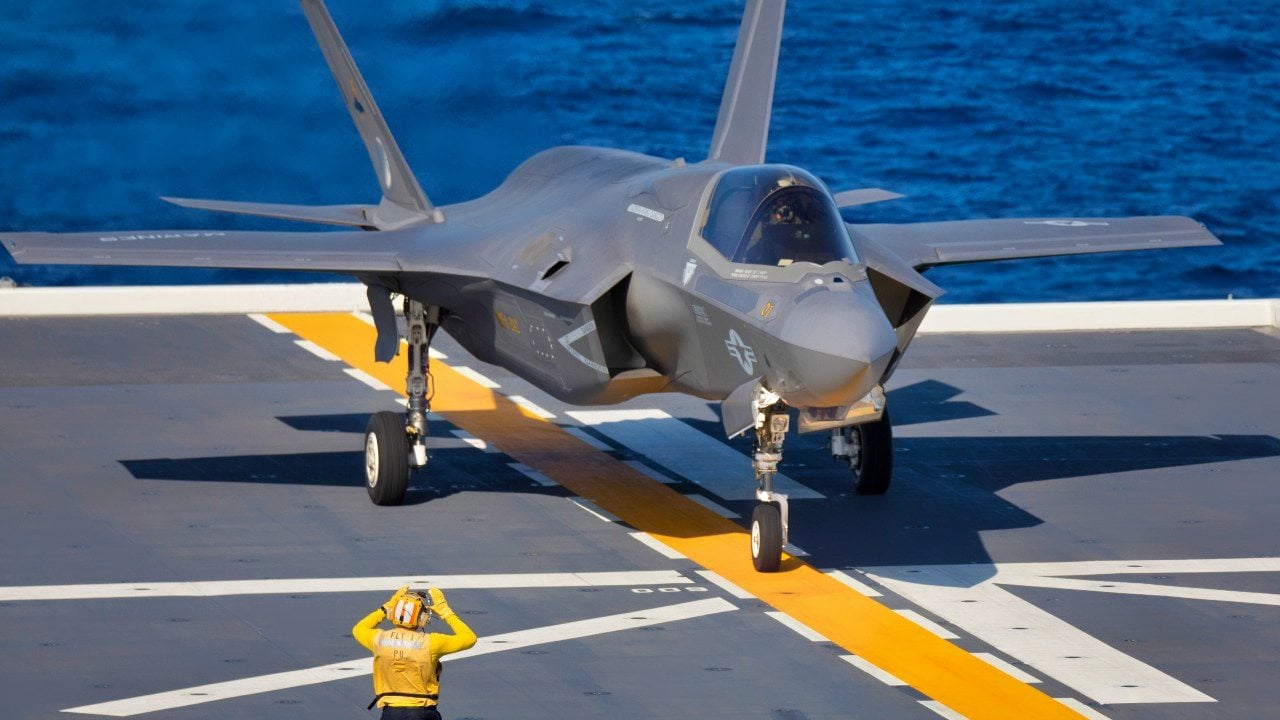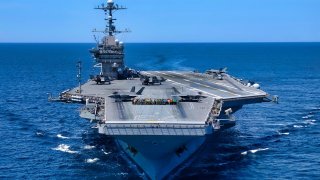Aircraft Carriers from U.S. Navy and Japan are Training for a China War
In January, the U.S. Navy demonstrated strengthened military cooperation with Japan through joint exercises in the Philippine Sea involving the USS Carl Vinson and USS Theodore Roosevelt, alongside the Japanese helicopter destroyer JS Ise - or what many consider an aircraft carrier in disguise.
Summary: In January, the U.S. Navy demonstrated strengthened military cooperation with Japan through joint exercises in the Philippine Sea involving the USS Carl Vinson and USS Theodore Roosevelt, alongside the Japanese helicopter destroyer JS Ise - or what many consider an aircraft carrier in disguise.
-These exercises underscore the growing naval collaboration aimed at countering Chinese aggression in the Indo-Pacific. This strategic partnership enhances interoperability and tactical skills, reflecting a broader commitment to regional peace and stability.
-Additionally, Japan's evolving carrier capabilities, highlighted by upgrades to its Izumo-class vessels for F-35B operations, and collaborations with other nations like Italy and France, further signify a robust alignment with Western naval powers against emerging threats in the region.
The U.S. Navy and Japan: The Aircraft Carrier Alliance?
In January, a pair of U.S. Navy aircraft carrier strike groups took part in exercises with an important allied warship. The USS Carl Vinson (CVN-70) and USS Theodore Roosevelt (CVN-71), two nuclear-powered Nimitz-class carriers, drilled with the Japan Maritime Self-Defense Force helicopter destroyer JS Ise (DDH-182) for a number of days in the Philippine Sea.
The joint drills came just two months after the Carl Vinson and Ronald Reagan strike groups conducted joint operations in the region alongside Japanese warships. The exercises signal closer ties between Washington and Tokyo as the two move to confront Chinese aggression in the Indo-Pacific.
"The purpose of this training is to improve the tactical skill and interoperability with the U.S. Navy," said Rear Adm. Hitoshi Shimizu, commander of Escort Flotilla 2. "Our relationship is committed to regional peace and stability."
Aircraft Carrier Operations
The Ise first entered service in 2011. Since that time, the Hyuga-class helicopter destroyer has conducted multiple joint operations with U.S. Navy carriers, including a March 2017 deployment with the USS Ronald Reagan (CVN-76).
The Japanese warship, which was designed to operate rotary aircraft, also sailed with the USS Carl Vinson, the amphibious assault ship USS America (LHA-6), and the Royal Navy flagship HMS Queen Elizabeth in August 2021.
International Partnerships
These deployments are reminders that the United States is not sailing the world's oceans alone. Tokyo is becoming a true carrier power again. Japan's two Izumo-class helicopter destroyers are being modified to operate with the Lockheed Martin F-35B, the short/vertical takeoff and landing variant of the fifth-generation fighter.
Later this year, the JS Ise and likely the newly transformed Izumo-class carrier JS Kaga (DDH-184) will operate with the Italian Navy's flagship ITS Cavour (550), which is scheduled to make a deployment to the Indo-Pacific. The Italian carrier operates F-35B fighters in its embarked air wing with a multinational force of escorts. In addition, France will also deploy its carrier FS Charles De Gaulle (R91) to the region along with an escort and support group.

Countering China
Though the People's Liberation Army Navy (PLAN) is now beginning sea trials of the Type 003 Fujian, China’s third and largest carrier, its capabilities are no match for U.S. vessels. The PLAN also lacks the carrier experience of the U.S. and its allies. Further, the Fujian is unlikely to ever gain the benefit of sailing alongside any foreign carriers. Chinese partners such as Iran and North Korea are unlikely to build one. It is possible that Russia's troubled flagship, the Admiral Kuznetsov, somehow returns to service. But even if it does, the PLAN probably won’t want its supposedly state-of-the-art Type 003 vessel sailing anywhere near Russia's problem-plagued carrier – a warship known to belch thick smoke that can be seen miles away.
Author Experience and Expertise: Peter Suciu
Peter Suciu is a Michigan-based writer. He has contributed to more than four dozen magazines, newspapers, and websites with over 3,200 published pieces over a twenty-year career in journalism. He regularly writes about military hardware, firearms history, cybersecurity, politics, and international affairs. Peter is also a Contributing Writer for Forbes and Clearance Jobs. You can follow him on Twitter: @PeterSuciu. You can email the author: [email protected].


